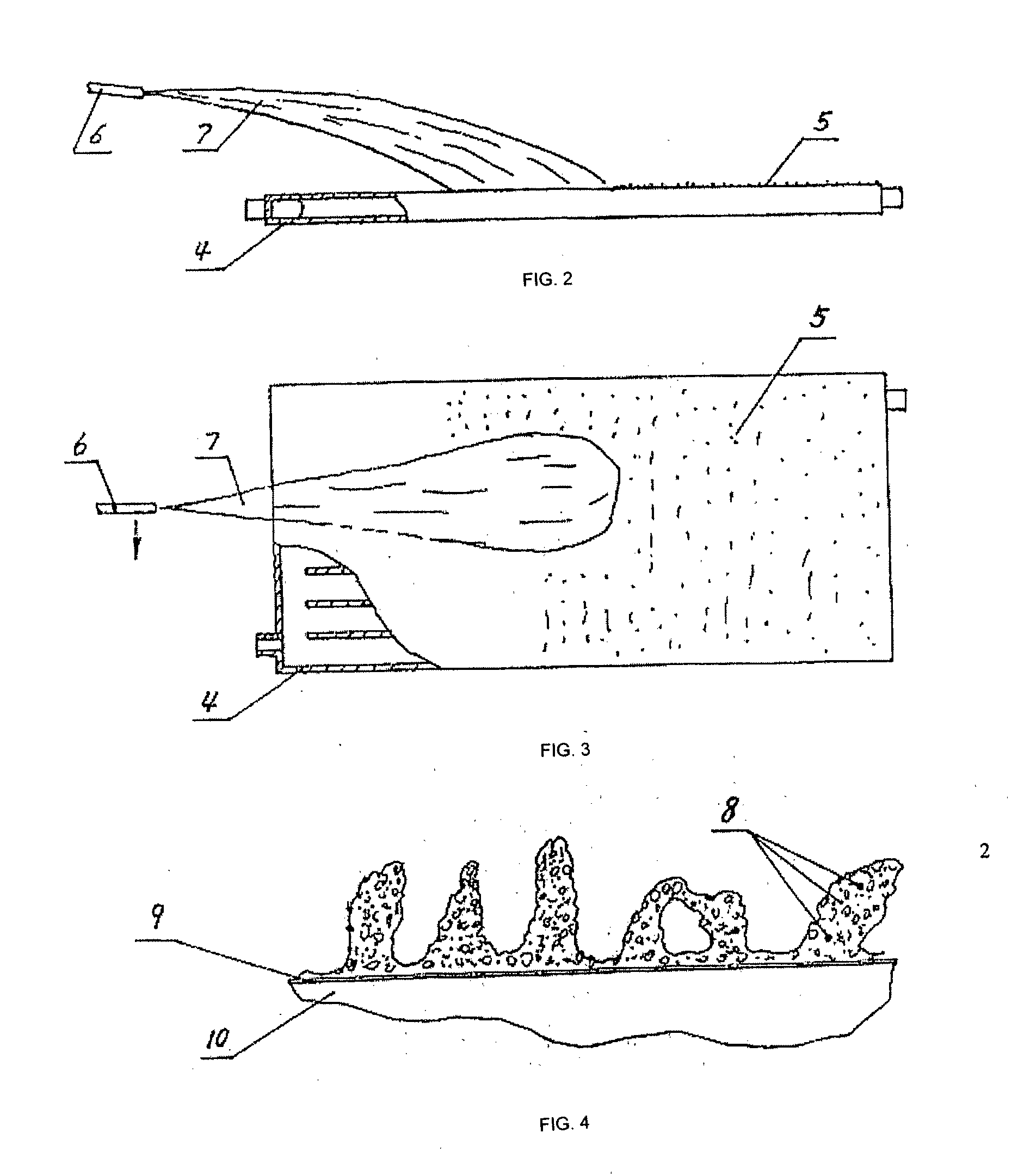Presently, the disadvantages of the collectors are high cost and
short lifetime.
Regardless of the precise, complicated and advanced collectors that may be used, they can not collect more energy.
Therefore,
solar energy collection needs a collector with huge area.
1. the
metal pipe plate type collector mainly adopts
copper, aluminum etc., and the structure and manufacturing process of the vacuum glass
pipe are relatively sophisticated, the prices thereof are relatively high for the thermal absorbing area per
square meter.
2. both adopt black
sunlight absorbing
coating material coated in low temperature, and there is aging in the sun for a long time, which may lead to attenuation of absorptivity, the
metal can be easily eroded, the vacuum rate in the vacuum glass
pipe decreases gradually, these are the main reasons for problems relating to
life time and efficiency.
In addition, there is larger area of wall surfaces facing toward sun, the energy for building is enormous, mainly for summer and winter
air conditioning and daily used hot water etc.
However, the fossil energy is exhausting, and the adequate use of reproducible energy is a tendency.
However, these experimental solar roof and solar house are erected on conventional art, and the conventional energy consumed during construction and the lifetime may even go beyond the solar energy absorbed therebetween.
The solar energy is unstable and low-density energy.
1. Normally, there is a
temperature difference of 30° C. inside and outside of the
greenhouse, when the solar collector is stagnated, the
temperature difference inside and outside may exceed 120° C. Compared therewith, the thermal collecting efficiency of the “
solar chimney” is relatively low. However, the existing solar collector is expensive, in which the vacuum glass pipe thermal collecting body is a blind tube with an end blocked which is hard for air flow unobstructed in addition to practical application difficulties.
2. The
chimney with a
diameter of 130 m and a height of 1000 m is the highest man-made building, and the technology and constructing difficulty during constructing process may bring high cost.
It is not convenient to generate power using underground hot water as that using geothermal steam, since the steam itself is the thermal carrier and
working fluid when steam is used for electric generation.
The
specific volume of the steam with low pressure is large, thus the unit capacity of the
turbine is greatly limited.
In addition, the method thereof still has
fouling problem.
However, the generation by depressurization and dilation has a safe running process whereas the capacity of the generator set is low.
1. There are rare districts on terrestrial surface with geotherm being exposed, in addition, the districts have already been developed.
2. The exploiting cost for deep layer geotherm is high, and the success rate for
well drilling is low.
3. The wells drilled always go beyond 1000 m, and the cost is increased since 100% recirculation should be achieved to maintain productivity and to protect environment.
4. Normally, the geotherm fluid is erosive, and is easy for
fouling, thus increasing operation cost and equipment cost accordingly.
However, the surface may create bubbles and air holes, which may bring quality issues.
And the
coating layer is prone to be scaled off, thus polluting the items being dried.
Except a little of the
thermal energy being dissipated through
radiation or by
air conduction, most
thermal energy is transferred to parts of the indoor space through the uprising heat air flow which drives
indoor air into convective circulation, however, this also may lead to dust on or near the ground and the
bacteria carried in the dust to be scattered in heights in the room, which may easily suctioned by
human body and bring negative influence.
However, the
infrared coating material is expensive, prone to be scrapped off, it is not accepted widely.
Formerly, the radiator mostly uses
cast iron one, however, due to the inferior working condition, grotty appearance and large occupation of land, the production thereof decreases gradually.
But, steel material, especially
welding is strongly eroded by hot water therein.
However, due to the complicated structure thereof, the covering can not be done in a rigorous and persistent way.
And the service life of the steel heat dissipating plate presents a dilemma.
Further,
copper heat dissipating plate has a high cost.
However, the former black porcelain has to add period IV
transition metal elements such as Co, Cr, Ni, Mn, Fe etc, which are expensive.
For a long time, manmade Co series ceramic black colorant has to be strictly formulated, with fine and complicated manufacturing to obtain color stable ceramic black colorant normally sold at 200 thousands RMB per
ton.
And the
tailings thereof are special industrial castoff, in which the extraction and utilization of any one of the components are inferior to that of the corresponding
natural mineral.
However, the method for moulding
Vanadium-
titanium black porcelain hollow solar plate using plaster mold ejection has a low efficiency and a large consumption of plaster.
In addition, the production yield for moulding a large sized solar plate is low.
And joints of small-sized plates are too many to be easily installed, and it is hard to develop into an industrial manufacturing method on a large scale and to spread on a large scale.
 Login to View More
Login to View More 


